In the proud tradition of our adventures in weird fiction, we once again lose control of the wheel and crash into theosophy, Marvel comics and Mythosian Elder Gods. Fire extinguishers at the ready, because the Lords of the Flame are here, dear listener. Oh, and there’s a great bundle of post-Lovecraftian books on offer at the moment. We’ll get to that later…
Did Stan Lee abandon his obsession with H P Lovecraft in 1963 and deliberately draw on theosophy to refute cosmic horror? This is the question which countless weird fiction enthusiasts and Marvel fans have debated for years, and one which must be answered. Such debates, conducted late into the night over glasses of cheap vitriol (no ice, twist of lemming), are divisive. They must go on no longer. We know the unbelievable truth.
Which, if you know us, will turn out to be just one of those odd things that happen. And no, Lee didn’t have an obsession with HPL or theosophy as far as we know, but you’ll see how things interconnect as we toddle along.
On Younger Older Elder Gods
Noted author of the weird, H P Lovecraft (1890-1937) died eighty years ago this week. He believed that the vast enormity of the cosmos was at best indifferent, at worst hostile to the state and fate of humanity. Such things as might be gods were blind, obscene essences of roiling or brooding madness. OK, that’s what he wrote in his fiction, anyway.
Writer/editor August Derleth (amongst others) then played with those ideas. Derleth created new hierarchies around Lovecraft’s god-like beings. And in the process he started adding the Elder Gods who, confusingly, somehow oppose the Outer Gods and the Great Old Ones.
This Elder Gods version of the Mythos may be well established now, but Lovecraft himself only mentioned Nodens (we believe), who he described as the “hoary and terrible lord of the primeval Abyss”. Which doesn’t sound that benevolent. We have the feeling that Derleth missed the point of it all, really.
Marvel Comics’ Stan Lee (1922-), on the other hand, believed that very large Space Gods in funky metal outfits created by Jack Kirby would come to judge us. Headed by Arishem the Judge, these gods, or Celestials, were anti-Lovecraftian in some ways – organised and clearly defined – but they did at least dsplay quite a bit of indifference to mere mortal whitterings.
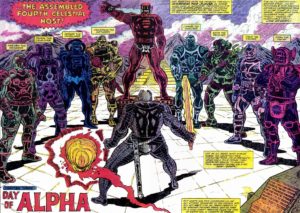
After the Celestials (it seems), and relevant to our piece, came entities like Gaea, goddess of the Earth, Set, the serpent god of death, and Chthon, god of darkness and chaos. The Elder Gods, in fact, but not as old as the Mythos ones. Younger Elder Gods.
It all went a bit wrong for Marvel’s Elder Gods. Set started eating his kin to gain more power, becoming the first murderer in Earth history, an act which made him turn into a demon. The other Elder Gods thought this seemed cool and started to do the same. Gaea intervened, and… suffice to say it all ended in bloodshed, with most of the gods dead.
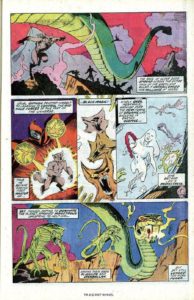
Some of the demonic survivors were imprisoned, though they continued to affect the Earth indirectly through their worshippers, or evil artifacts. A situation which bears no resemblance to, say, Lovecraft’s Cthulhu or any of the Great Old Ones in the Mythosian puddle, oh no. Not at all.
This sitation is further confused by various magickal entries and mock-Necronomicons, which link the Elder Gods of Babylon (Tiamat et al) to Lovecraft’s ideas. In the process they leave a muddy heap of Marvel’s Elder Gods, Mesopotamian magick and the Elder Gods of the Derlethian hierarchies. HPL might have had a laugh at that.
TRIVIA BREAK: More “Set” related-stuff – where Lovecraft definitely comes into play, can be found in Marvel Premiere #4, ‘The Spawn of Sligguth’ (1972). Sligguth, as everyone knows, is descended from the Marvel Elder Gods. A child of Set, he later escaped to another dimension when his physical form was due to be destroyed. Author Pierre Comtois says:
“Veteran storysmith Gardner Fox… took his cue from horror writer H P Lovecraft, fashioning a pseudo-mythology for Dr Strange based on HPL’s own ‘Cthulhu Mythos’.
“(Sligguth is) a sub-aquatic creature obviously inspired by Lovecraft’s sub-sea god Cthulhu. As the story unfolds, Dr Strange is led to a town called Starkesboro, standing in for HPL’s Innsmouth where the residents all display ichthyic qualities similar to those of the latter municipality.”
Marvel Comics in the 1970s: An Issue-by-Issue Field Guide to a Pop Culture Phenomenon (2011)
Dagon, maybe, but we’re not sure that Sligguth is quite up to Cthulhu’s standards. Stan Lee didn’t influence this one, as he had moved on to his publishing role, after scripting and altering Barry Smith’s Dr Strange story in Marvel Premiere #3.
Gardner Fox (1911-86), on the other hand, had been interested in HPL’s work since at least the forties, and one of his own characters, Dr Fate, supposedly comes from that interest.
Back to the plot (we’ll return to Dr Strange in a while). As for the Celestials and their various Hosts – a sort of family get-together where galaxies trembled – they had their critics. Judging civilisations and wiping them out was seen as quite invasive, especially by a race known as the Watchers.
In Marvel, the Watchers are one of the oldest species in the universe and are committed to observing and compiling knowledge on all aspects of the universe. The Watchers had made a minor mistake early on (hey, they only destroyed one civilisation), and decided to go neutral. Thus their policy of “non-interference” meant that the two races became enemies. Now let’s get theosophical.
The Lords of the Flame
In a previous excursion, we mentioned the Lords of Venus, advanced spiritual beings in the real-life writings of the theosophists. We’d better recap for younger listeners:
“Theosophy is a collection of mystical and occultist philosophies concerning, or seeking direct knowledge of, the presumed mysteries of life and nature, particularly of the nature of divinity and the origin and purpose of the universe. Theosophy is considered part of Western esotericism, which believes that hidden knowledge or wisdom from the ancient past offers a path to enlightenment and salvation.”
The theosophists of the Victorian and Edwardian periods had some fairly wild views:
“Those known as the Lords of the Flame, who arrive from Venus on the fourth globe, in the fourth Round, in the middle of the third Root Race, quicken mental evolution, to found the Occult Hierarchy of the Earth and to take over the government of the globe. It is They whose tremendous influence so quickened the germs of mental life that these burst into growth, and there followed the great downrush through the MONAD that we call the Life-Wave causing the formation of the CAUSAL BODY, the ‘birth’ or ‘descent of the ego’ for all those who had come up from the animal kingdom…”
Man: Whence, How and Whither, Annie Besant and Charles W. Leadbeater (1913)
It’s an evocative picture, and centres round an entity called Sanat Kumara.
“Our world is governed by a Spiritual King– one of the Lords of the Flame who came long ago from Venus. He is called by the Hindus Sanat Kumara, the last word being a title, meaning Prince or Ruler. Other names given to Him are the One Initiator, the One without a Second, the Eternal Youth of Sixteen Summers; and often we speak of Him as the Lord of the World. He is the Supreme Ruler; in His Hand and within His actual aura lies the whole of His planet. He represents the Logos, as far as this world is concerned, and directs the whole of its evolution– not that of humanity alone, but also the evolution of the Devas, the nature-spirits, and all other creatures connected with the earth.”
Leadbeater, The Masters and the Path, 1925
Which, as it happens, is identical to the role of Gaea in the Marvel Universe, where she nurtures the life essence of the Earth and all living creatures. Although as far as we know, the word kumara is derived from Sanskrit कुमार (kumara) meaning “boy, son” – not “Ruler”.
According to Twentieth century strands of Theosophy, Sanat Kumara is an “Advanced Being” – the ‘Lord’ or ‘Regent’ of Earth and of the humanity. He is thought to be the head of the Spiritual Hierarchy of Earth who dwells in Shamballah (also known as ‘The City of Enoch’).
Leadbeater and Besant said that Sanat Kumara brought 30 “Lords of the Flame” with him from Venus to help him set up his colony. In later versions, notable “Lords of the Flame” include Gautama Buddha, and the World Teacher (the being some describe as Maitreya or Christ).
This confusion is further confused by the presence of the Kumaras in Hindu texts. They are described as sons of the creator-god Brahma, and they are said to wander throughout the materialistic and spiritualistic universe in order to teach. Yet some texts say that Sanat Kumara is a child or avatar of Krishna, and there are even Christians who relate him to Lucifer.
All clear so far?
Watching Alice
Now you’ve got the background. Alice Ann Bailey (1880 – 1949) wrote dozens of books on theosophical subjects, and was one of the first writers to use the term New Age. Despite attempts to show that her writings influence H P Lovecraft, nothing proves that he had more than a passing knowledge of theosophical debate at the time. Bailey’s work was better known after HPL had written much of his formative work. However, we were interested to note her own driftings on Sanat Kumara.
According to her, Sanat Kumara has many assistants who help him in his arduous task of spiritually governing Earth as its presiding Regent. These include The Watcher (also called the Silent Watcher or the Great Silent Watcher), whose function it is to continually watch the Akashic records and download daily all the information on them relevant to the life waves of Earth and forward it to the Custodian of the Hall of Records.
It seems that the idea that the Watcher was part of a race posted throughout the Cosmos was first put forward by Leadbeater and continued by Guy Ballard and Elizabeth Clare Prophet.
Did Stan Lee know of this history when he developed his own Watchers? The initial appearance of the race was in Fantastic Four #13, in 1963. At this point there was one Watcher in play, with no name, and he was assigned to record what happened on Earth, exactly as in theosophy.
Later, as the Marvel mythology developed, it became known that the Marvel Watcher was called Uatu. Uatu’s strand goes all the way from 1963 to the 2014 ‘Original Sin’ comic book storyline. This features (bizarrely) Nick Fury and the Avengers investigating the murder of… Uatu the Watcher.
MORE TRIVIA: Uatu’s first recorded encounter with an Earthling occurred in the year 1602 A.D. when a possible-future Captain America was inadvertently sent back in time to that era, causing ripples in the timestream that threatened the very fabric of reality. Uatu revealed the nature of the problem to an Elizabethan-era version of yes, Dr Stephen Strange, who helped send the temporally-displaced Captain America back through a time-portal, correcting the timeline (Marvel Universe Wiki).
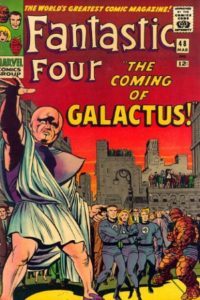
The creation of the Marvel character was down to both Lee and Jack Kirby (Kirby created the Celestials mentioned above in 1976, thirteen years later).
Lee was a child of Romanian Jewish immigrants, and Kirby of Austrian Jewish immigrants. Their fathers worked in the garment trade, and there seem no obvious links to movements like theosophy. Nor does it tie in especially well with what we know of Lee’s influences.
We therefore hazard the view that Kirby and Lee came up with an identical concept to that of Bailey et al’s theosophical Watchers without ever knowing the connection. Someone should ask Stan Lee while he’s still around, in case we’re wrong
Shamballa in Shambles
Almost finally (have you already left?), Shamballa. Or Shambhala, etc. This mythic place is a land (or city) of peace and spiritual learning, and a symbol which goes back into very early mythogogies or belief-systems. It was the inspiration for the concept of Shangri-La, but if we explain any more, this article will implode under its own weight.
Shamballa is another key concept in theosophy (see Sanat Kumara above). Suffice it to say that a while back we covered the Book of Dzyan, mentioned in Lovecraft’s story “The Diary of Alonzo Typer”:
“I learned of the Book of Dzyan, whose first six chapters antedate the earth, and which was old when the lords of Venus came through space in their ships to civilise our planet.”
This leads us to more complicated stuff. In Vajrayana Buddhism, the Buddha is supposed to have taught something called the Kalachakra tantra on request of a king of Shamballa; the teachings are also said to be preserved in Shamballa. Some believe that the Stanzas of Dzyan from which Blavatsky claimed to have gotten the information in The Secret Doctrine, are based on the Kalachakra tantra.
Lo and behold, Dr Strange was there, in Shamballa, in one of the oddest graphic novels from Marvel, Into Shamballa (1986). We still have our treasured copy.
With script by J M DeMatteis, plot by same and Dan Green, and art by Dan Green, it’s a beautiful thing, but confused the heck out of some fans. This is not the Steve Ditko classic Dormammu Doctor Strange which we so love, but it’s good. It’s more like a theosophical musing, beautifully illustrated.
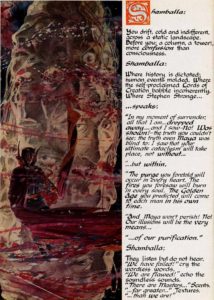
There’s a lot more that could be said about Dr Strange links to the Cthulhu Mythos and even theosophy, but this isn’t the time or place, sadly. We won’t even point out that Oshtur, one of the Marvel Elder Gods, helped create the Book of Vishanti. Which happens to be the white magic counterpart of the Darkhold, Marvel’s version of Lovecraft’s Necronomicon…
Or that “shamballa” is a wif-fi password in the latest Dr Strange film. So there.
A Bundle of Fun
We end by coming round in a circle to mention a great offer which is open until 29th March 2017. It’s a whole bundle of post-Lovecraftian ebooks, curated by author Nick Mamatas, and very good value. We ourselves have the bundle, and are enjoying it immensely.
The old greydog, John Linwood Grant, is in one of the volumes, Cthulhusattva, with a story which people are already calling ‘part of an anthology’. You should have a look while you can.
The Lovecraft Bundle
“H. P. Lovecraft is undoubtedly one of the most influential writers of the pulp era, leaving an indelible mark on the last hundred years of science fiction, fantasy, and horror. Not only is Lovecraft a central element of genre fiction today, he has ascended to the heights of mainstream literature, thanks to editions of his stories published by the definitive Penguin Classics and Library of America lines. Lovecraft was also a cult writer whose themes were explored in underground comics, in rock music, film, and fine art. And this all while being the sort of racist, anti-Semite, and homophobe that would exclude him from dinner parties…even during his own era.
“For a long time, Lovecraft’s mantle was carried in the small press, where slavish pastiche and careful avoidance of his politics were rules to be carefully followed. These days, however, Lovecraftian fiction is wider and more diverse. His themes and voice are being remixed, detourned, and exploded by a new generation of writers, and his distasteful opinions critiqued and parodied. This Lovecraftian Literature bundle explores the Lovecraftian idiom in a diversity of ways, from intense erotica to beat literature, from neo-pulp fun to theological exegesis.
“Among the goodies in this bundle is the World Fantasy Award-winning anthology of She Walks in Shadows edited by Silvia Moreno-Garcia, a bundle-exclusive collection Home from the Sea by pulp master William Meikle, the Pynchonesque (!) Lovecraftian military thriller duology Radiant Dawn/Ravenous Dusk by Cody Goodfellow, a real-life attempt at “keeping it R’lyeh” by examining the metaphysics of Lovecraft’s vision of the universe by Scott R. Jones…and a whole lot more!”
You can check out the offer here until the end of the month.
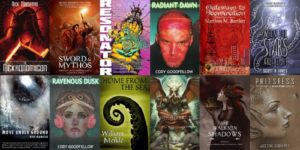
That’s it. Our heads hurt from Elder Gods madness. More news, trivia and things you don’t want to know in a few days…
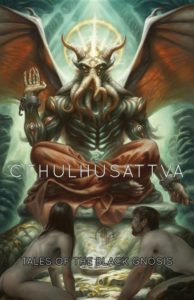
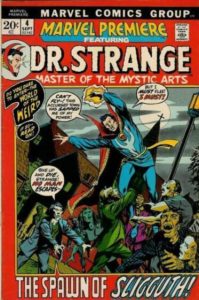



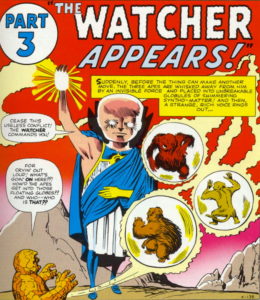
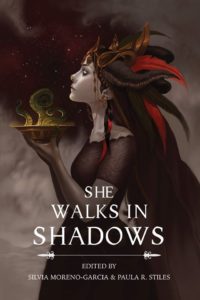




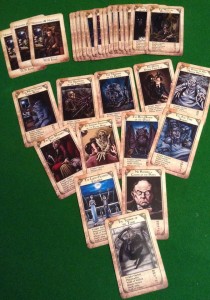
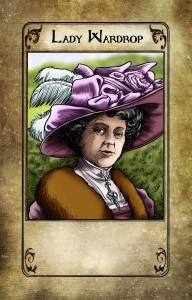

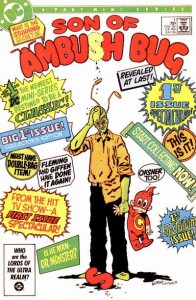
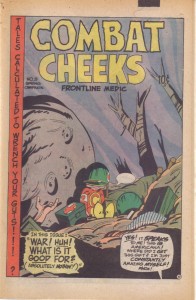
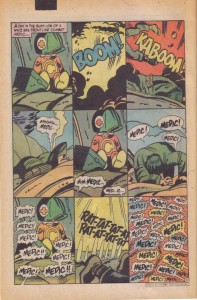
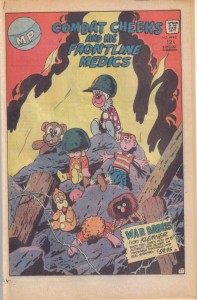

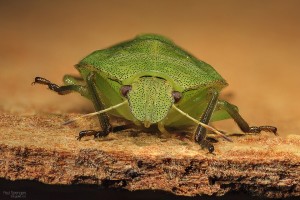
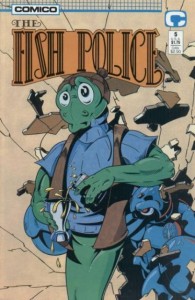
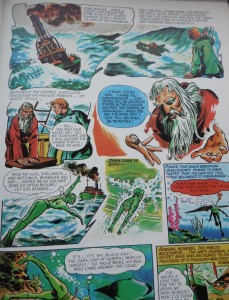
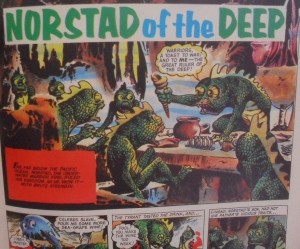
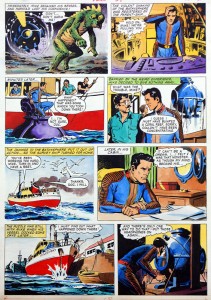

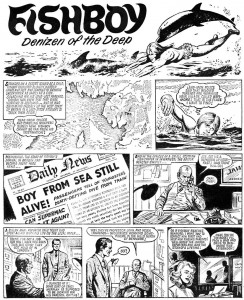
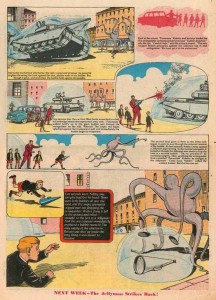

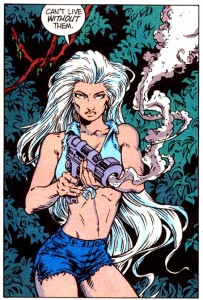


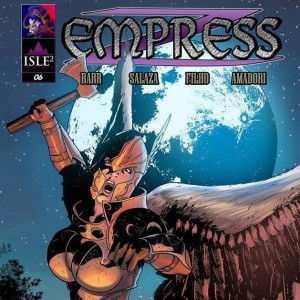
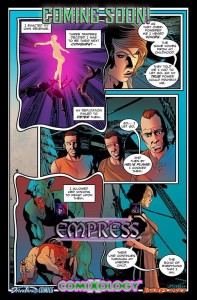
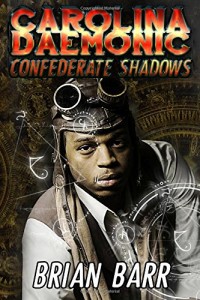
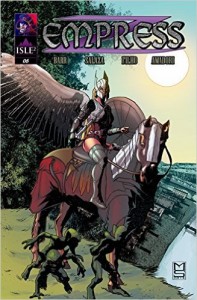 empress at amazon
empress at amazon